CHTF 2010 will focus on emerging industries, such as new energy, energy saving and environmental protection, new generation of information technology, biology, high-end equipment manufacturing, new materials and new energy automobiles.
Oct 22nd, 2010
Read more
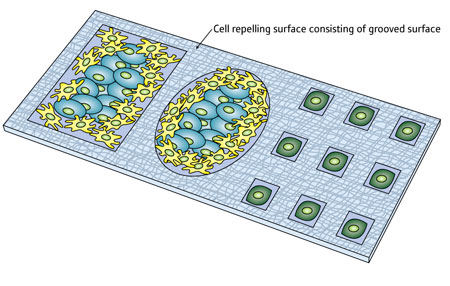 Cells can be cultured and sorted on specifically patterned surfaces of biomaterials.
Cells can be cultured and sorted on specifically patterned surfaces of biomaterials.
Oct 22nd, 2010
Read more
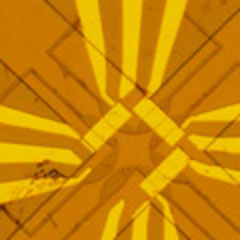 In solar cells, solar radiation boosts electrons to higher energy states, thereby releasing them from their atomic bonds as electricity begins to flow. Scientists led by Professor Alexander Holleitner, physicist at the Technische Universitaet Muenchen, have developed a novel method to analyze the way photogenerated electrons move in the smallest photodetectors.
In solar cells, solar radiation boosts electrons to higher energy states, thereby releasing them from their atomic bonds as electricity begins to flow. Scientists led by Professor Alexander Holleitner, physicist at the Technische Universitaet Muenchen, have developed a novel method to analyze the way photogenerated electrons move in the smallest photodetectors.
Oct 22nd, 2010
Read more
The Institute for Defense and Government Advancement (IDGA) is pleased to announce the 10th Lightweight Materials for Defense Summit, scheduled for December 6-8, 2010 in the Washington, DC Metro Area.
Oct 21st, 2010
Read more
 Imagine that, one day, we would be able to implant electronics in the brain. Electronics that restore damaged regions of the brain. Or impaired functions, such as speech, hearing, vision, movement control, or even memory.
Imagine that, one day, we would be able to implant electronics in the brain. Electronics that restore damaged regions of the brain. Or impaired functions, such as speech, hearing, vision, movement control, or even memory.
Oct 21st, 2010
Read more
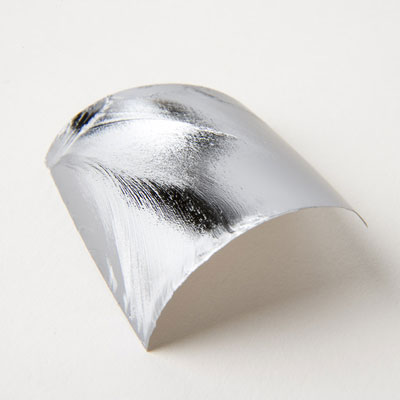 Imec has started work, together with its project partners, on SUGAR, a project under the EU's 7th framework program for ICT. The project's goal is to develop a process for the integrated production of photovoltaic modules based on ultra-thin crystalline Si.
Imec has started work, together with its project partners, on SUGAR, a project under the EU's 7th framework program for ICT. The project's goal is to develop a process for the integrated production of photovoltaic modules based on ultra-thin crystalline Si.
Oct 21st, 2010
Read more
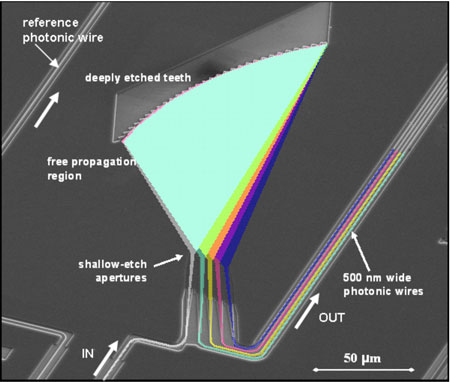 The European FP7 funded project SmartFiber, a consortium led by imec and including partners Ghent University, Airborne, FBGS Technologies, Xenics, Fraunhofer and Optocap, will develop a smart miniaturized system for continuous health monitoring of composites that integrates optical fiber sensor technology, nanophotonic chip technology and low-power wireless technology.
The European FP7 funded project SmartFiber, a consortium led by imec and including partners Ghent University, Airborne, FBGS Technologies, Xenics, Fraunhofer and Optocap, will develop a smart miniaturized system for continuous health monitoring of composites that integrates optical fiber sensor technology, nanophotonic chip technology and low-power wireless technology.
Oct 21st, 2010
Read more
Imec and its partners have successfully fabricated Au-free, Si-processing compatible GaN power devices on a 6 inch Si wafer. This result is a milestone in imec's industrial affiliation program (IIAP) on GaN power and light-emitting (LED) devices that targets cost reduction as one of the main objectives.
Oct 21st, 2010
Read more
Clean Energy Alliance, Inc. (CEA), the national association of clean energy business incubators, announced today, at the National Renewable Energy Laboratory's 23rd Industry Growth Forum, the formation of the Department of Energy (DOE) Small Business and Clean Energy Alliance Partnership.
Oct 21st, 2010
Read more
Converting acid rain chemicals into useful products.
Oct 21st, 2010
Read more
Being the right size and existing in the limbo between a solid and a liquid state appear to be the secrets to improving the efficiency of chemical catalysts that can create better nanoparticles or more efficient energy sources.
Oct 21st, 2010
Read more
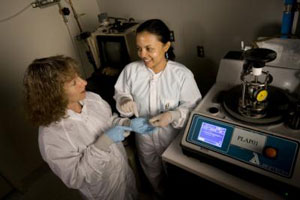 As good as the metal has been in zipping information from one circuit to another on silicon inside computers and other electronic devices, optical signals can carry much more, according to Duke University electrical engineers. So the engineers have designed and demonstrated microscopically small lasers integrated with thin film-light guides on silicon that could replace the copper in a host of electronic products.
As good as the metal has been in zipping information from one circuit to another on silicon inside computers and other electronic devices, optical signals can carry much more, according to Duke University electrical engineers. So the engineers have designed and demonstrated microscopically small lasers integrated with thin film-light guides on silicon that could replace the copper in a host of electronic products.
Oct 21st, 2010
Read more
The National Nanotechnology Initiative (NNI) will celebrate its tenth anniversary with the National Nanotechnology Innovation Summit, December 8-10 at the Gaylord National Convention Center, National Harbor Maryland.
Oct 21st, 2010
Read more
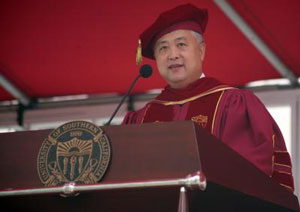 The new gift will establish the USC Ming Hsieh Institute for Research on Engineering Medicine for Cancer.
The new gift will establish the USC Ming Hsieh Institute for Research on Engineering Medicine for Cancer.
Oct 21st, 2010
Read more
Ikerlan-IK4 and Mondragon Unibertsitatea are taking part in a project initiated by the Spanish National Research Council, CSIC, and which has developed a microchip capable of separating and extracting tumour cells in the blood stream by means of ultrasonic waves.
Oct 21st, 2010
Read more
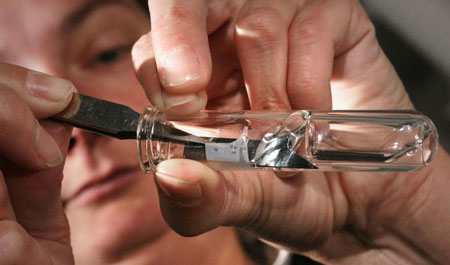 Chemists from the Jena University improve the process for the fabrication of sharp Atomic Force Microscopy tips.
Chemists from the Jena University improve the process for the fabrication of sharp Atomic Force Microscopy tips.
Oct 21st, 2010
Read more









 Subscribe to our Nanotechnology News feed
Subscribe to our Nanotechnology News feed